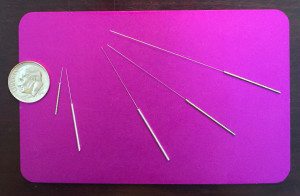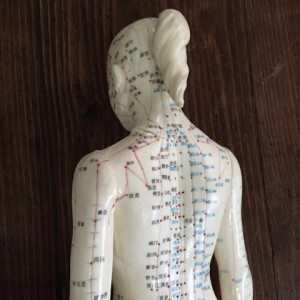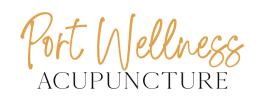FAQs

What conditions are treated with acupuncture?
The World Health Organization/UN identifies at least 50 conditions that are relieved by acupuncture, covering muscles and joints, digestion, the respiratory system, behavior and reproduction. These include:
- Allergies
- Chronic pain
- PMS, menstrual pain & menstrual irregularity
- Digestive disorders
- Anxiety
- Depression
- Fatigue
- Menopausal symptoms
- Insomnia
- Weak immunity
- Infertility
- Stress
- Side effects of chemotherapy
- Joint pain
- Surgery recovery
- Headaches
- TMJ
- Post-Traumatic Stress Disorder (PTSD)

What does an acupuncture needle look like?
Acupuncture needles are far different from a hypodermic needle used to give injections or withdraw blood. Acupuncture needles are thin, solid and about as thick as a dog whisker. They can be as short as 5/8” and up to several inches long. Most acupuncturists use needles that are ½” to 1 ½” long, although longer needles are used for thicker areas. Needles are inserted into the skin from 1/8 to several inches deep.
Are the needles reused?
No. Never. Single-use disposable needles insure that there is no contamination or transmission of disease. They are pre-sterilized, individually packaged/sealed by a manufacturer (or packaged in sets of 5 or 10), and disposable. Once they are used, they are disposed of in a medical waste container. They are opened only when ready to be used.
Does Acupuncture Hurt?
This is the most common question asked about acupuncture because many people associate needles with pain. Because acupuncture needles are so thin, so they are virtually painless upon insertion, although sometimes you’ll feel a small pricking sensation. After insertion, the practitioner will take the needle to the appropriate depth. You will then feel a unique sensation that has been described as tingling, heaviness, a deep dull ache, warmth or nothing at all. You may feel a travelling sensation above or below the needle. Stimulating the needles (a gentle twirling, pulling or pushing) can be done by hand, or by attaching electrodes that transmit a weak current. Each person’s experience is different, and sometimes one point has a different sensation than another. If you are uncomfortable, tell your acupuncturist and they will adjust the needles accordingly.
Many people become so relaxed during treatment that they fall asleep. In fact, when I ring my bell at the end of the treatment, it’s not unusual to be asked, “Was I snoring??” Afterwards, some people continue to experience relaxation, while others feel energized.
Where are the needles placed?
This depends on the condition being treated. Although acupoints are located throughout the entire body (there are approximately 400 points that are taught in acupuncture schools, but there are many more), most of the needles are placed below the elbows and knees. Other common locations are abdomen, back, ears and head.
What are acupoints and meridians?

Acupuncture points are those areas on the body that have been shown to relieve pain or improve body function when stimulated by a needle, pressure, or heat. These points are small, and exact location is important for attaining maximum benefit from a given treatment. By inserting needles into points on the meridian pathways, the normal flow of energy may be restored and balanced. The points are organized into twelve classic meridians, which are named after the organ systems to which they correspond. There are also eight extra meridians, which have distinct functions, and address specific conditions. Additionally, Master teacher-practitioners have discovered extra points that have also proved clinically useful. “Ah Shi” – an “ouch” point – is a way to describe a tender spot that is not on an established point or meridian, but may also be needled. So your acupuncturist has a wealth of acupoint options to address your health concerns.
What health benefits can I expect?
Research has discovered that acupuncture points show a variety of unique bioelectric properties. Stimulation of acupuncture points cause definite physiological reactions affecting brain activity, such as releasing pain-killing endorphins, influencing blood pressure, enhancing the immune system, balancing the sympathetic and parasympathetic nervous systems and enhancing the endocrine system. Most of all, acupuncture stimulates the body’s natural ability to heal itself and regain homeostasis or equilibrium.
How many treatments are necessary?
It depends on your medical issue. Problems that have been present for a long time usually take more treatments to resolve than ones that are recent. If you are in pain or discomfort, then more treatments scheduled closer together (for example, two treatments a week for two weeks) are needed to interrupt the pain cycle and establish relief. Then treatments can be stretched out until you feel better. For example, women with menstrual pain might need weekly treatments for a month, but then come in just once a month during the week before their cycle. Some conditions can be resolved with just one or two treatments. Some conditions can be managed with fewer treatments and the addition of herbal formulas. However, every circumstance is unique. This is something to talk about during your initial consultation.
What are the side effects of acupuncture?
One of the greatest advantages of acupuncture is the absence of serious side effects. Rarely, there may be some slight bruising or tingling around the area where a needle was placed. Most people experience a better night’s sleep, more energy, mental clarity, less stress, and better digestion and elimination. Some people can experience deep and unexpected emotional release with the needles in. Others experience lightheadedness (so it’s important to have eaten reasonably before treatment). Some people feel worse after treatment, and then feel better within 24-36 hours (in 20 years of practice, I still cannot predict when this will happen, but I prefer to alert my patients that it may). You may feel more fatigued, which is usually a sign that you need additional down time, an earlier bedtime, and/or a longer night’s sleep. If you leave your treatment feeling sluggish, then take it easy that night. Take a relaxing bath or warm shower, eat lightly and go to bed early. Start listening to what your body needs. Come morning, the combination of acupuncture and a good rest will set you up for a terrific day!
How long does a treatment take?
The initial visit usually lasts one and a half to two hours due to the time required for a complete medical history/lifestyle questions, examination and treatment. Follow-up treatments tend to take only one hour, but can vary depending on types of modalities used. Cosmetic treatments are usually 90 minutes.
Can I receive acupuncture if I’m pregnant?
Yes. It’s important to tell your practitioner that you are pregnant because some points are contraindicated during pregnancy. However, acupuncture can also help ease symptoms of morning sickness and muscle aches that are common during pregnancy.
How do I choose an acupuncturist?
The best way to find a good acupuncturist is to ask your friends and family for the name of a practitioner they’ve had a good experience with. But if that doesn’t yield a few names, then here are a few more points to consider:
- Training/Licensed/Insured: In states with strict licensing laws, acupuncturists must have completed approximately 4 years of training and passed rigorous state and/or national board exams (look for an NCCAOM certification, or “Diplomate” or “Dipl.” after their title). But in other states, less qualified people may legally practice.
- Free initial phone consult: Before scheduling your appointment, ask to have a conversation about your health concerns, their approach to your circumstances, insurance billing, fees for service, cancellation policy and any other questions you may have.
- Fit: Although you want someone who can address your health concerns with confidence, you also need to feel comfortable with them. They might be well-qualified or have a good reputation, but if you don’t feel comfortable disclosing your health history, or feel like they are hearing you, then it might be a sign to keep looking.
Do you accept insurance?
I am in network with Blue Shield PPO, and will try to bill most insurance plans. Acupuncture is not covered by Medicare or MediCal. I am not in network with any HMO plans.
If you have a PPO plan, I will inquire and let you know if your insurance plan has acupuncture benefits. If you want to know ahead of time, you can submit your Insurance Verification Form.
If you have coverage, you may need to meet a deductible before treatment will be covered. It can take up to 48 hours to verify coverage, and coverage is not finalized until a claim is submitted and processed.
